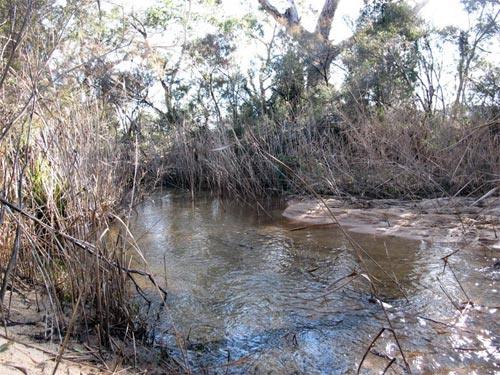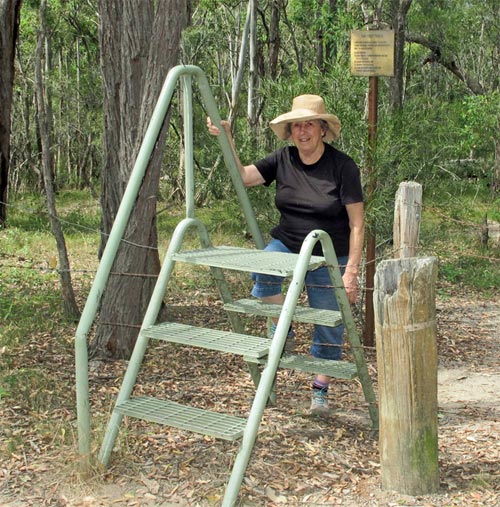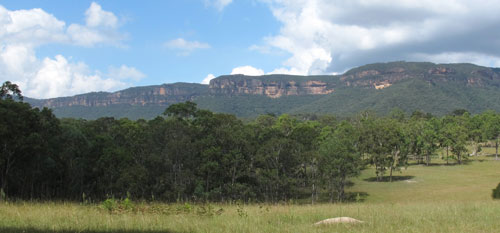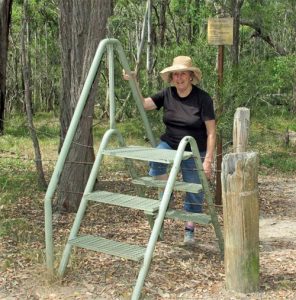Many of the Jenolan visitors who begin their caves walking excursion from the overflow carpark will pause to admire the majestic Carlotta Arch and the view through it to the Blue Lake, far below.
Carlotta Adams was the daughter of PF Adams who surveyed the Devil’s Coachhouse, another spectacular open cave. The sides of this natural arch contain hints of the abundance of “stalactite” formations the visitor can expect on a guided cave tour.

[photo: © (Geoff Dernee]
The unique blue of the lake, so often framed by Carlotta Arch in photographs, is caused by the dissolution of limestone in the chilly waters flowing through some of the underground caves. In recent years, a platypus family has been noticed residing in the lake.
© Don Morison





